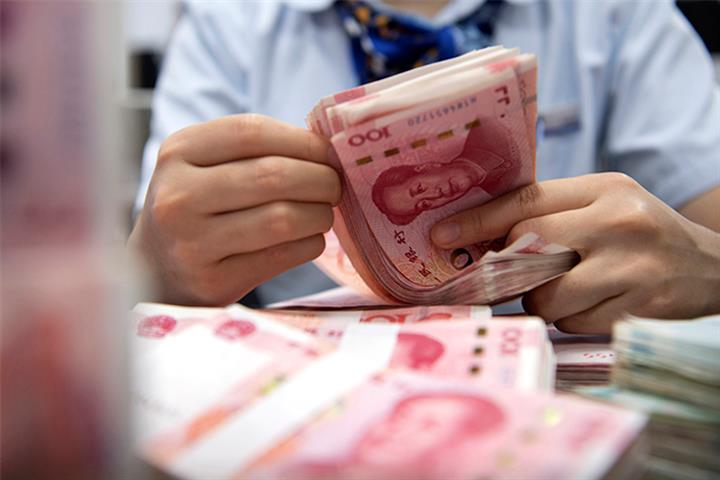 US Dollar Slides as Analysts Anticipate Slowdown in Fed’s Rate Hikes After SVB Collapse
US Dollar Slides as Analysts Anticipate Slowdown in Fed’s Rate Hikes After SVB Collapse(Yicai Global) March 14 -- The US dollar has been losing ground since the sensational collapse of US tech lender Silicon Valley Bank last week, which has led to expectations among market insiders that the US Federal Reserve will not want to make financial stability concerns worse by continuing to increase interest rates.
“The collapse of a US bank presents the Fed with a difficult set of choices. Even if the failure of one bank does not imply systemic risk for the banking sector, can the Fed risk exacerbating financial stability concerns by continuing to hike rates? That doesn’t sound like good risk management,” Eric Robertsen, global chief strategist at Standard Chartered Bank, said in an analysis report sent to Yicai Global.
Concerns about the slowdown in interest hikes caused the US dollar to tumble to 103.5 from 106 last week, which in turn lead to an appreciation of the Chinese yuan to about 6.8 today compared with nearly 7 on March 8.
But on the other hand, it boosted market confidence which was reflected in the Chinese stock markets yesterday. The Hang Seng Tech Index in Hong Kong gained almost 4 percent while the Shanghai Stock Exchange Composite Index advanced 1 percent. But today the Hang Seng Tech Index closed down 2.5 percent and the Shanghai Composite Index dipped 0.7 percent.
“Unfortunately, the Fed’s rate-hiking cycle has yet to conquer inflation. So even if the US economy has already embarked on its downward trajectory, the Fed is hardly in a position to cut rates with inflation still so far above target,” Robertsen added.
“Just prior to the market becoming aware of problems brewing for a US bank, the markets were priced for a terminal Federal Funds Target Range, which is the interest rate set by the Fed, of roughly 5.75 percent by September and with discussions increasing about a 6 percent terminal rate. By the end of the week, terminal rate expectations had declined by 50bps,” Robertsen said.
“The general trend for the dollar is downward, possibly with some fluctuations and upward blips,” a foreign exchange trader at a joint-stock Chinese bank told Yicai Global. The panic will subside before the US releases its consumer price index, a gauge of consumer inflation, on Tuesday. If the data exceeds expectations, the dollar will likely have upward blips, he added.
Bailout
Silicon Valley Bank went bankrupt on March 10 after the Santa Clara-based lender announced that it had sold some securities at a huge loss to boost liquidity, spooking investors and leading to a spectacular run on the bank’s deposits.
The US Department of the Treasury acted swiftly yesterday to set up a USD25 billion emergency loan to protect depositors and the banking system, fending off a market meltdown.
“The bailout can protect depositors from losses and avoid systematic risks from a more extensive run on the bank and will be paid by the entire banking sector after the issue is solved,” a Chinese cross-border securities trader told Yicai Global.
“The bailout plan is the second-best plan after a market-based acquisition,” he said. “It is used probably because no appropriate buyer has been found or none of the potential buyers offer an acceptable price in such a short period of time and a bailout directly from the US Federal Government will cause greater ethics risks.”
“A slump in the stock market on Monday was avoided, and market confidence has resumed, but the financial sector still faces great pressure. Stability on a temporary basis does not mean the problem is solved for good. The market will shift its focus back to the consumer price index and employment data next week,” said Jerry Chen, analyst at GAIN Capital Holdings.
“We have been keeping our powder dry and waiting for better entry levels to buy into emerging markets and sell the greenback. The current episode of market volatility and financial uncertainty will provide that entry point at some point, but we will need much more clarity before increasing risk,” Robertsen said. “We expect volatility to stay elevated, which is also a sign that we have likely reached the peak of the economic cycle. When the tide of liquidity goes out, you see all kinds of ugly things, and this process has just started.”
Editor: Kim Taylor